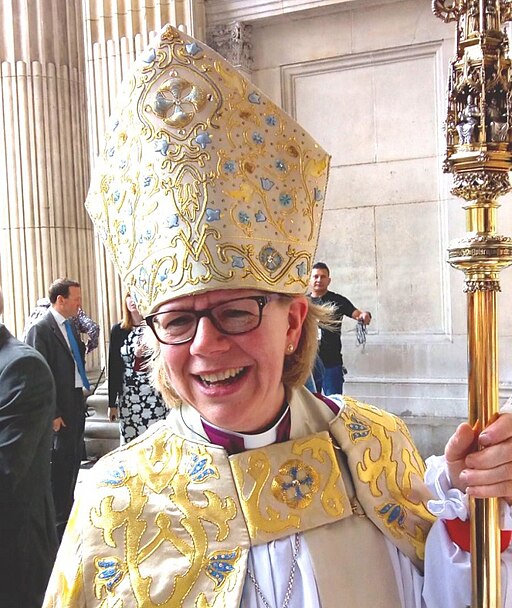The Church of England has named Dame Sarah Mullally as the new Archbishop of Canterbury – its most senior bishop and effectively its spiritual leader. For some, it’s a historic step forward in the progress of gender equality in the Anglican Church. For others, it’s another step backward away from Bible principles. Let’s see what the Bible says.
First of all, what is a bishop? The Bible’s New Testament was written in Greek. When we see the English word ‘bishop’, it’s the translation of a Greek word that means ‘overseer’. You can see the job description of a bishop in 1 Timothy 3:1-7. In the original church it was not a paid profession – the bishop was generally a member of the congregation who, because of his spiritual credentials, was appointed as its overseer. Bishops were always men.
Before we go any further, it’s important to get a fundamental fact clear. All Christ’s followers are equal in value and status before God. These are words of the Apostle Paul:‘There is neither Jew nor Greek, there is neither slave nor free, there is no male and female, for you are all one in Christ Jesus’ (Galatians 3:28). As far as God is concerned, nobody is superior or inferior to anybody else. All His people are redeemed sinners.
But that doesn’t mean they’re all the same. They have different functions in the community of believers. Paul likens it to the human body, with different parts, some of which are more prominent but all of which are vital to the body (1 Corinthians 12:12-31).
When Paul said ‘There is neither Jew nor Greek, there is neither slave nor free, there is no male and female’, he wasn’t advocating homogeneity. There were in his time Jews and Greeks, and they had different outlooks. There were slaves and free, and they were to respect their position in society (1 Corinthians 7:21). There were men and women, and what we’ll see is that the roles they had in the church were different.
These are Paul’s instructions on the running of a church: ‘Let a woman learn quietly with all submissiveness. I do not permit a woman to teach or to exercise authority over a man; rather, she is to remain quiet’ (1 Timothy 2:11-12).
This has earned Paul the reputation among some as a misogynist. But we can dismiss this claim: Paul was writing under inspiration of God – these are God’s words, not Paul’s opinion.
Others suggest that Paul’s instructions were applicable only to the male-dominated culture of the First Century. This view is not consistent with the facts, for two reasons. The first is that the Bible is not a book of its time – often the principles and rules it contains were very much out of step with contemporary culture, just as they’re out of step with our culture. For example, Jesus was just as happy to speak with women as to men, to the surprise of his contemporaries (John 4:27). From what we know of Jewish culture at the time, no self-respecting rabbi would do that.
The second reason why we can be sure that Paul’s instructions were not based on contemporary culture, is apparent when we read on: ‘For Adam was first formed, then Eve. And Adam was not deceived, but the woman being deceived was in the transgression’ (1 Timothy 2:13-14). The reason why Paul said women are to be silent in the church goes right back to the creation of the world.
We are all created in the image of God – men and women. ’God created man in his own image, in the image of God created he him; male and female created he them’ (Genesis 1:27). We are all blessed with the ability to appreciate, respond to and worship God. But again, there is a difference in role between men and women.
God created Adam, the first man (Genesis 2:7). He then created Eve as ‘a helper fit for him’ (v. 18). Chapter 3 tells how the serpent tempted them to disobey God. The record is clear that they both failed. God had commanded Adam not to eat of the forbidden tree (v. 17). He should have stepped in and stopped the serpent, but he didn’t. Eve took the forbidden fruit, and gave it to Adam. She ‘exercised authority’, he let her do it. They both failed.
That’s the background to Paul’s instructions. When the community of believers follows the practice of men leading and women helping, it’s absolutely, categorically not about ability, or natural leadership skills, or male domination. It’s simply that, as a community together, they’re showing that they are disowning the sin that was committed in Eden.
The New Testament abounds with inspirational accounts of the words and actions of many men and women. What is clear is that both men and women play key roles, in the story of Christ himself and in the growth of the early church after his departure to heaven. But it’s also very clear that the roles are different – the men take the lead, and the women support.
For some, this will be easy to accept. For others, it won’t. There are men who really would rather take a back seat, they’re not comfortable taking a spiritual lead. And there are women who would be happy to take the lead, and might feel frustrated at not being able to. But God does not necessarily give us what we want:
God arranged the members in the body, each one of them, as he chose (1 Corinthians 12:18).
Chris Parkin

